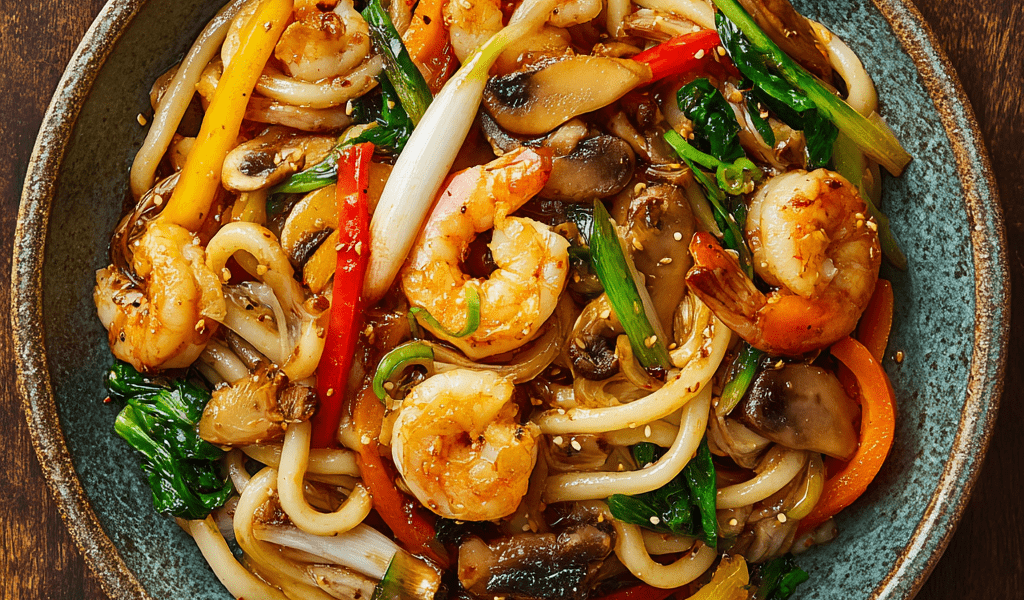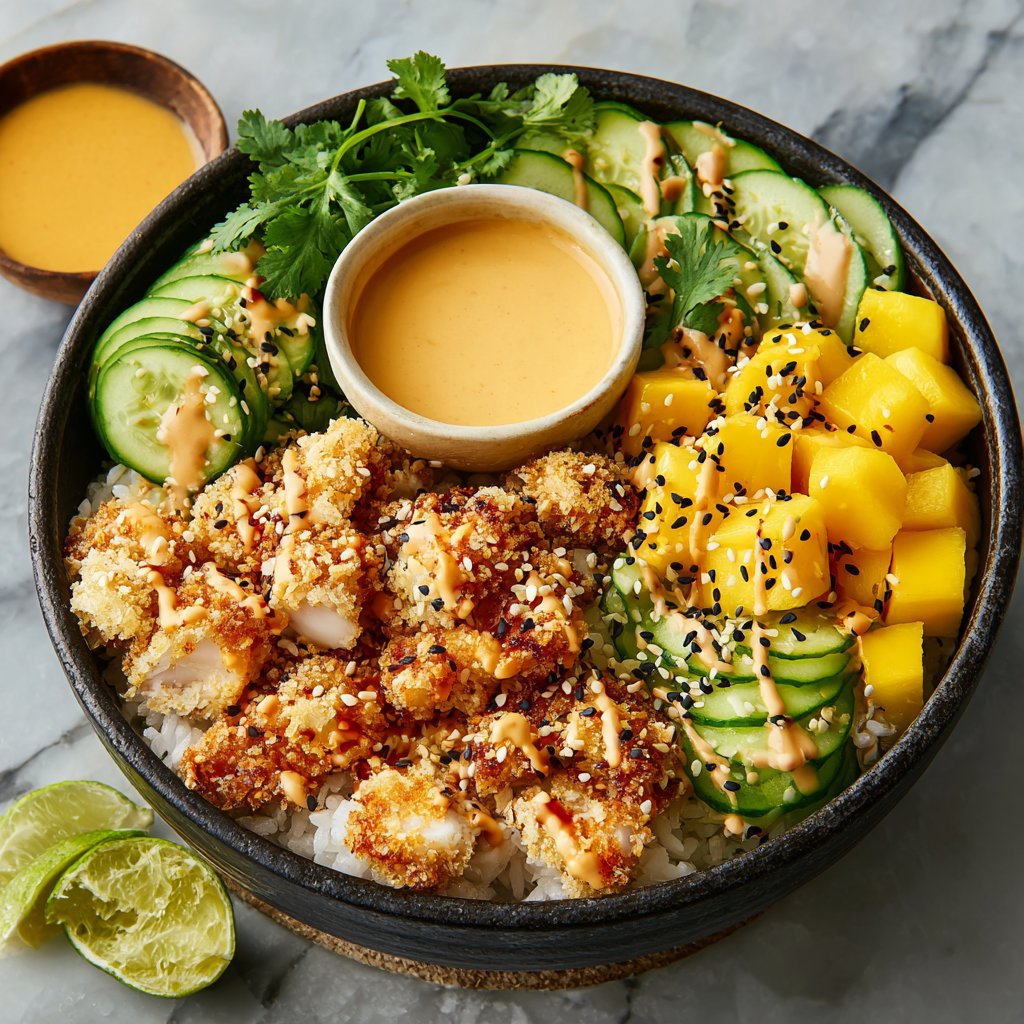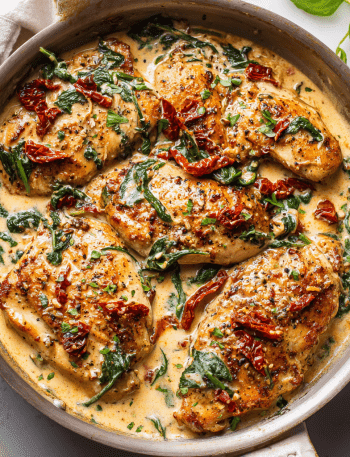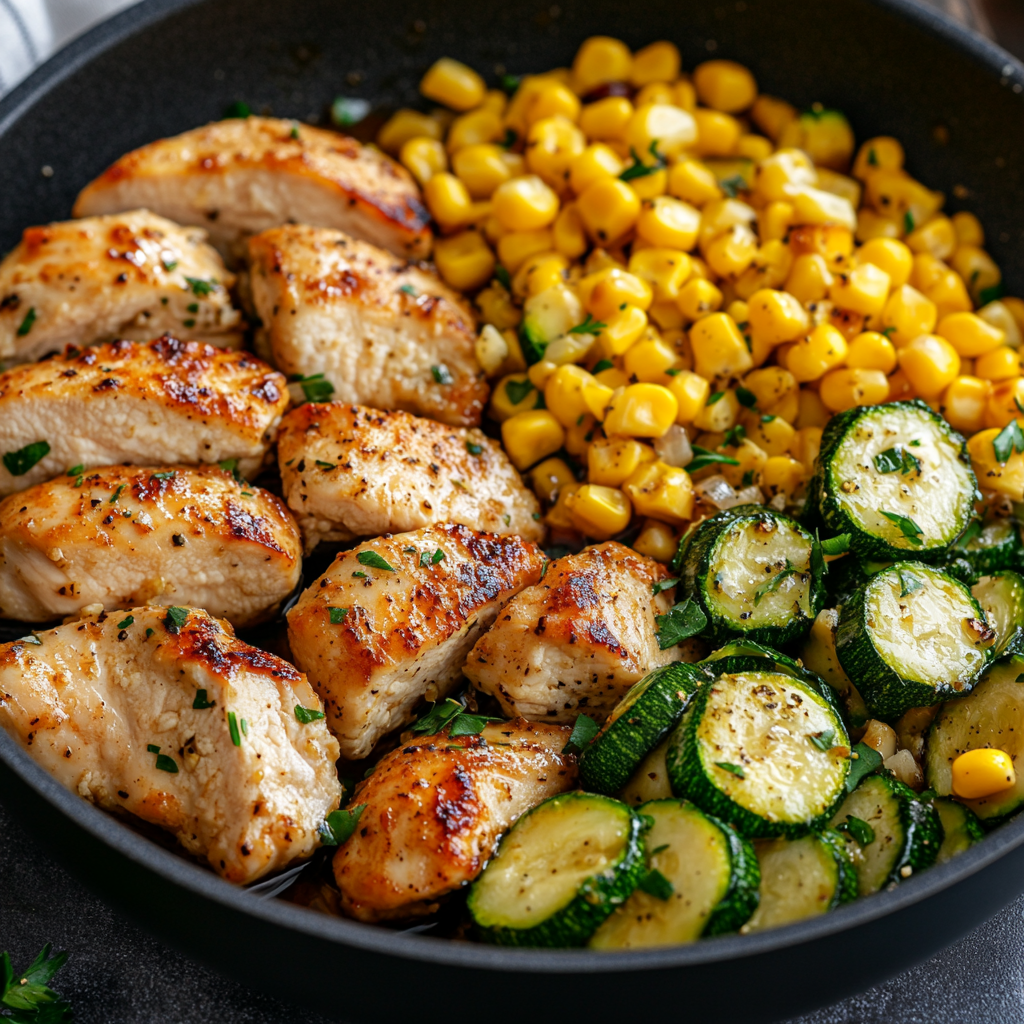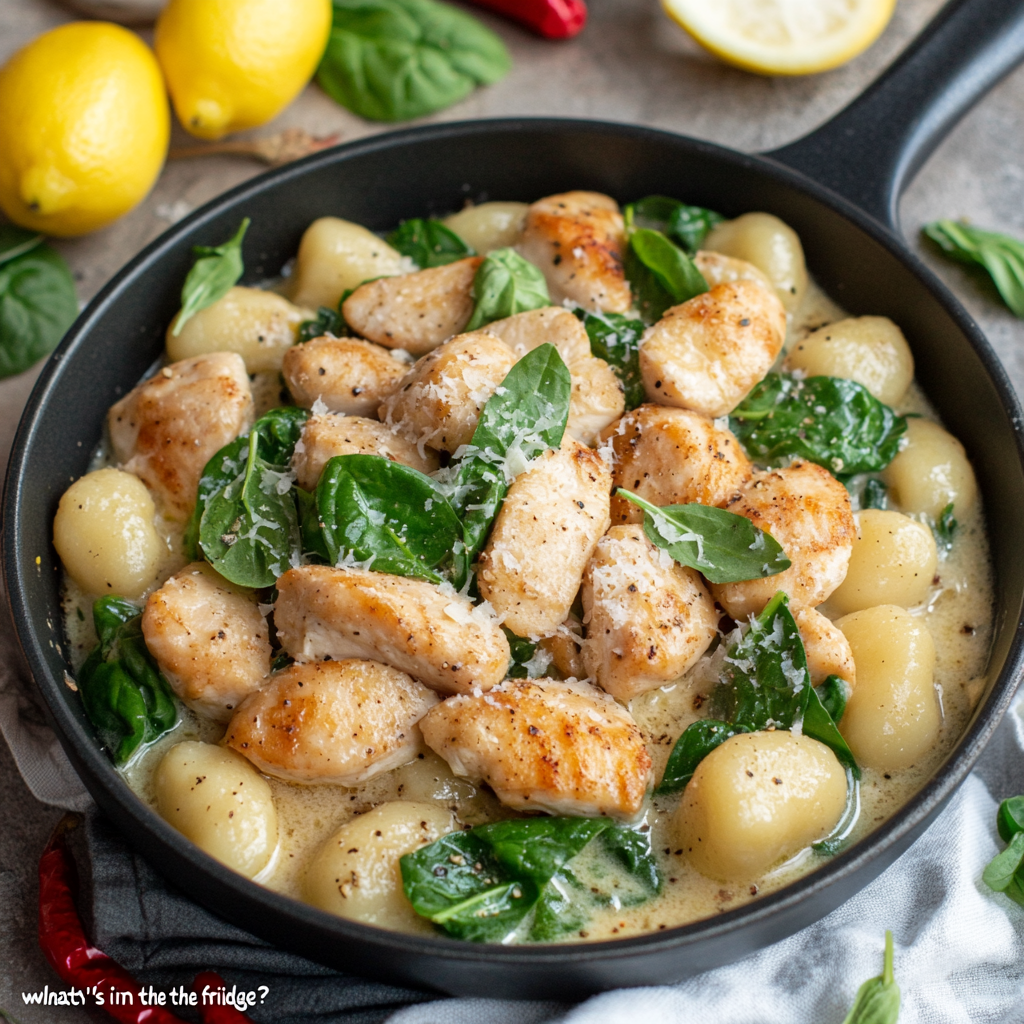20-Minute Yaki Udon with Shrimp: Your New Weeknight Hero
Hey there, friend! Let’s be real for a second. Some nights, you stare into the fridge, willing dinner to magically appear. Other nights, you crave something truly delicious—something that feels like a treat but doesn’t require a culinary degree or a three-hour time commitment.
If you’re nodding your head, you and I are about to become best kitchen pals. Because today, we’re making my go-to, never-fail, always-impressive Yaki Udon with Shrimp.
This isn’t just any stir-fry. This is a glorious tangle of thick, chewy udon noodles, plump, juicy shrimp, and a rainbow of crisp-tender vegetables, all slicked with a sauce that’s the stuff of dreams. We’re talking savory, sweet, umami-packed, and just a little bit peppery. It’s the kind of meal that makes you feel like a weeknight wizard, whipping up restaurant-quality flavor in the same amount of time it takes to watch a sitcom.
So, tie on your favorite apron (the messy one is always the best), and let’s turn up the heat. We’re about to make a meal that will have everyone at the table asking for seconds.
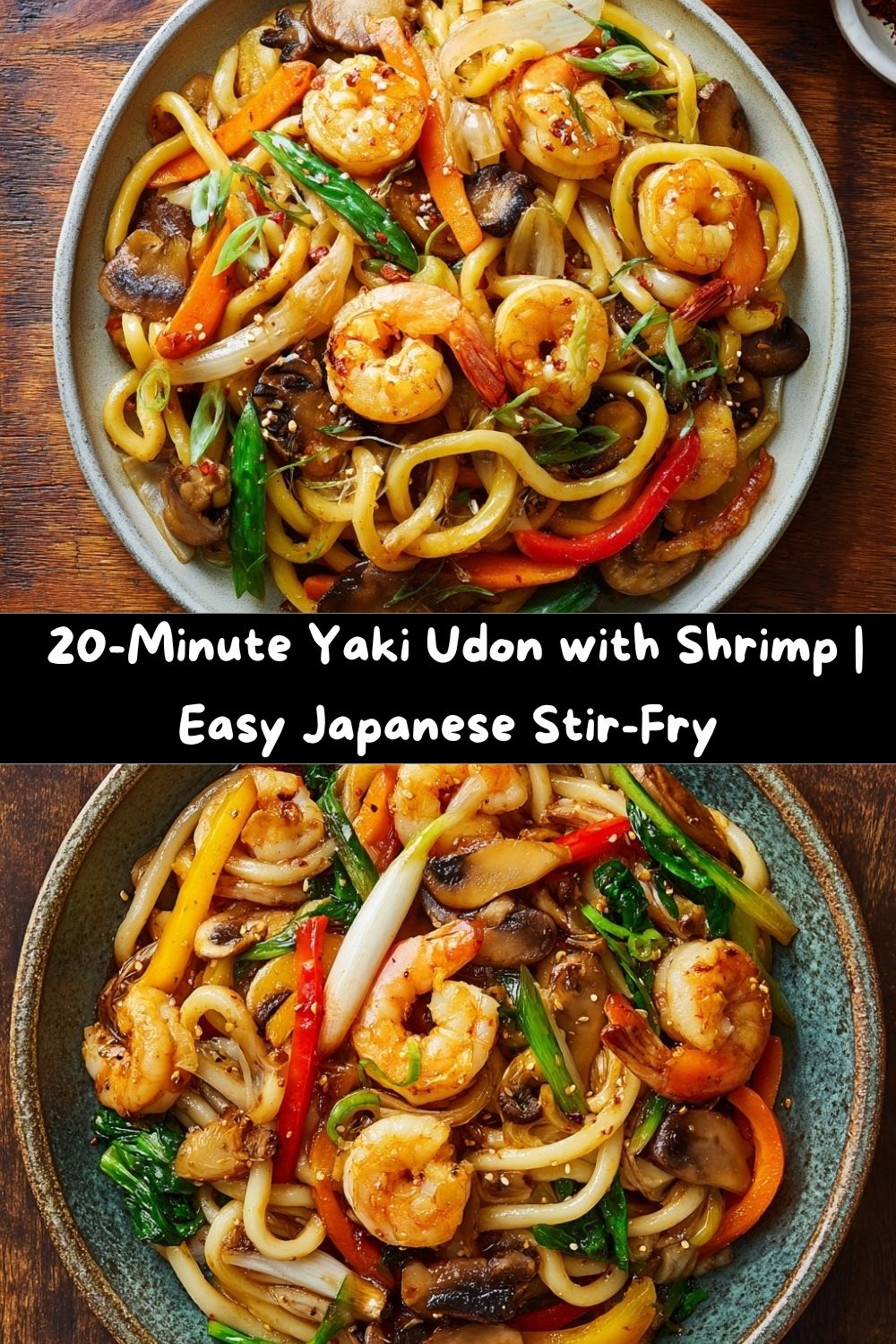
The Noodle That Started It All
My love affair with udon noodles started in a slightly… unconventional way. It wasn’t in a fancy restaurant, but in my first post-culinary-school apartment, which had a kitchen the size of a postage stamp. A dear friend, who had just returned from teaching English in Japan, came over, took one look at my sad-looking packet of ramen, and declared, “We can do better.”
She dragged me to an Asian market, her eyes lighting up as she found the vacuum-sealed packs of fresh udon noodles. “These,” she said, holding them up like a trophy, “are life-changing.” That night, in my tiny kitchen, we created a version of this very dish. We laughed, we splashed soy sauce everywhere, and we sat on the floor because I didn’t have a proper table. But that first bite? Pure magic. It was hearty, comforting, and bursting with more flavor than I thought possible in 20 minutes. It was the meal that taught me that great food isn’t about perfection; it’s about joy, connection, and a really, really good sauce.
Gathering Your Yaki Udon Squad
Here’s the beautiful part: the ingredient list is simple and flexible. This is your canvas! Let’s break it down.
For the Noodles & Stir-Fry:
- 2 packs (400g) Udon Noodles: I highly recommend the vacuum-sealed or frozen “fresh” udon. They have that wonderfully chewy, springy texture that makes this dish so special. If you can only find dried, that’s okay—just cook them according to the package directions first!
- 4 tablespoons Neutral Oil: We’re using a high heat, so grab something like avocado, canola, or vegetable oil. Their high smoke point is perfect for stir-frying. Save your fancy olive oil for drizzling later!
- 20–24 Shrimp (approx. 200g): Peeled and deveined, please! I like to use large shrimp for a meaty bite. A quick pro-tip: pat them very dry with a paper towel before cooking. This is the secret to getting a nice sear instead of them steaming in their own juice.
- 2 cloves Garlic, minced: The fragrant foundation. Don’t be shy!
- 1 Yellow Onion, thinly sliced: It caramelizes slightly and adds a wonderful sweetness.
- 200g White Mushrooms, sliced: These little sponges soak up all the delicious sauce. So good!
- 2 Carrots, julienned: I use a julienne peeler for quick, pretty matchsticks. They add a lovely crunch and color.
- 2 Spring Onions: We’re separating the green and white parts. The white part gets sautéed for flavor, and the green part is our fresh, colorful garnish.
- 2 tablespoons Regular Soy Sauce: We add this at the end to layer the saltiness.
- Pinch of Salt and Pepper: For seasoning our shrimp.
- Optional Twist: ½ Red Bell Pepper, sliced thin: I almost always add this for a pop of color and a sweet, roasty flavor.
- Optional: Chili Flakes or Fresh Red Chili: For my heat-loving friends! A little goes a long way.
For That “Can’t-Stop-Eating-It” Sauce:
- 2 tablespoons Oyster Sauce: This is the umami BOSS. It gives the dish its deep, savory backbone. (For a vegetarian swap, use mushroom stir-fry sauce!).
- 2 teaspoons Dark Soy Sauce: Don’t confuse this with regular! It’s thicker, less salty, and gives the noodles that gorgeous, dark caramel color. If you don’t have it, just use all regular soy sauce, but know the color will be lighter.
- 2 teaspoons Rice Vinegar: Our secret weapon! It adds a subtle tang that cuts through the richness and makes all the flavors pop.
- 2 teaspoons Brown Sugar: A touch of sweetness to balance the savory. It also helps the sauce caramelize beautifully on the noodles.
- ½ teaspoon Freshly Crushed Black Pepper: Trust me, the fresh crack makes a world of difference. It provides a warm, aromatic heat.
- 1 tablespoon Toasted Sesame Oil: We add this to the sauce, not the pan. Its nutty fragrance is delicate and can burn at high heat, so we stir it in off the heat.
- Optional Twist: ½ teaspoon Grated Ginger: If I have a knob of ginger in the fridge, I always add this. It gives the sauce an incredible fresh, zingy depth.
Let’s Get Wok-ing! (See what I did there?)
Okay, team. The key to a great stir-fry is having everything prepped and within arm’s reach. The cooking process is fast and furious, so let’s do this like a well-oiled machine (literally!).
- Prep Your Noodles: If you’re using vacuum-packed udon, place them in a heatproof bowl and cover with hot water for just 1 minute. This gently warms them and loosens them up. Drain them thoroughly and give them a little toss to separate the strands. Chef’s Hack: I like to drizzle a tiny bit of the neutral oil over the drained noodles and toss them to prevent sticking while I wait.
- Whisk the Magic Sauce: In a small bowl, whisk together the oyster sauce, dark soy sauce, rice vinegar, brown sugar, black pepper, toasted sesame oil, and grated ginger (if using). Set this flavor bomb aside. Doing this first is a game-changer—no fumbling with bottles mid-stir-fry!
- Cook the Shrimp: Heat a large wok or a heavy-bottomed skillet over medium-high heat. Add 2 tablespoons of your neutral oil. Once the oil is shimmering, add your thoroughly dried shrimp in a single layer. Season with a pinch of salt and pepper. Let them sear for about 1-2 minutes per side until they’re pink and just cooked through. Do not overcrowd the pan! If you need to, cook them in two batches. Remove them from the wok and set them aside.
- Sauté the Aromatics & Veggies: Add the remaining 2 tablespoons of oil to the same wok. Toss in the garlic and the white parts of your spring onions. Stir-fry for just 30 seconds until fragrant—don’t let the garlic burn! Now, add your onion, mushrooms, carrots, and bell pepper (if using). Stir-fry for 3-4 minutes, until the vegetables are just starting to soften but still have a nice crunch. We’re going for “tender-crisp,” not mushy!
- Bring It All Together: Now, add your drained udon noodles to the wok. Pour that beautiful sauce you prepped earlier right over everything. Using a pair of tongs or two spatulas, toss and stir-fry everything together, ensuring every noodle and veggie gets coated in that glossy sauce. Keep it moving for 2-3 minutes. You’ll see the noodles start to darken and even get a few delicious, slightly caramelized bits.
- The Grand Finale: Return the cooked shrimp to the wok. Add the 2 tablespoons of regular soy sauce and give everything one final, vigorous toss to heat the shrimp through. Taste it! This is your moment. Does it need a pinch more salt? A dash more chili? Adjust to your heart’s content. Turn off the heat and immediately stir in the green parts of your spring onions and your fresh chili (if using).
How to Serve Your Masterpiece
You’ve done it! Now, let’s get this beauty to the table. I’m a firm believer that presentation is part of the fun.
I love serving this family-style, right out of the wok in the middle of the table. It feels communal and inviting. Grab some shallow bowls and use tongs to create a beautiful, high nest of noodles. Make sure you get plenty of those shrimp and colorful veggies peeking through.
For a little extra chef’s kiss, garnish with a final sprinkle of sliced spring onion greens, a tiny drizzle of toasted sesame oil, and maybe even a sprinkle of white and black sesame seeds. If you’re like me and love a bit of heat, serve with Sriracha or chili crisp on the side.
This dish is a complete meal in a bowl, but it pairs wonderfully with a simple, crisp cucumber salad or a cup of miso soup to start. And don’t forget the chopsticks!
Make It Your Own! Yaki Udon Variations
The beauty of this recipe is its versatility. It’s a perfect template for whatever you have on hand or whatever you’re craving.
- Chicken or Tofu Twist: Not a shrimp person? No problem! Swap it for thinly sliced chicken breast or thigh (cook it through first, just like the shrimp). For a vegetarian option, use cubed firm or extra-firm tofu. Press the tofu well and pan-fry it until golden and crispy before setting it aside and adding it back at the end.
- Garden Lover’s Dream: Load it up with veggies! Thinly sliced cabbage, broccoli florets, snap peas, or baby corn would all be fantastic additions. Just remember to add harder veggies (like broccoli) a minute or two earlier than softer ones.
- Spicy Yaki Udon: Turn up the heat! Add a tablespoon of Gochujang (Korean chili paste) to your sauce mixture, or finish the dish with a generous spoonful of chili crunch or a drizzle of chili oil.
- Teriyaki Glow-Up: Craving something sweeter? Add an extra tablespoon of brown sugar and a tablespoon of mirin to the sauce for a teriyaki-inspired version. It’s a kid-friendly favorite!
Chef Emily’s Kitchen Notes
This recipe has been with me for years, and it’s evolved in so many fun ways. I once accidentally used honey instead of brown sugar when I was out—it was a happy accident that created a wonderfully glossy sauce! I’ve also learned the hard way that the single most important step is prepping everything before you even turn on the stove. Stir-frying is a sprint, not a marathon, and having your “mise en place” (everything in its place) is what separates a stressful mess from a joyful, sizzling success. This dish is forgiving, so don’t sweat the small stuff. Cooking is about the joy you pour into it, not just the ingredients.
Your Yaki Udon Questions, Answered!
I’ve gotten a lot of questions about this recipe over the years. Here are the most common ones to help you out!
Q: My noodles turned out sticky and gummy. What did I do wrong?
A: This usually happens for one of two reasons. First, you might not have drained them well enough after soaking. Give them a good shake! Second, you might have overcrowded the wok, which steams the noodles instead of frying them. Make sure your wok is nice and hot before adding the noodles, and give them plenty of room to toss and caramelize.
Q: I can’t find dark soy sauce. Is it a big deal?
A) You can absolutely still make this! The dish will be a bit lighter in color and you’ll miss some of that deep, molasses-like flavor, but it will still be delicious. Just use all regular soy sauce in the sauce mixture. You might want to reduce the total amount by a teaspoon or so to account for the higher saltiness.
Q: Can I make this ahead of time?
A: Stir-fries are always best served immediately, but you can be a meal-prep hero! Chop all your veggies and make the sauce up to 2 days in advance. Store them separately in the fridge. When you’re ready to eat, the actual cooking will take you less than 10 minutes.
Q: My veggies got soggy. How can I keep them crisp?
A) High heat is your best friend here! Make sure your wok is seriously hot before adding the veggies. Also, cut them uniformly so they cook evenly, and don’t add them all at once if some cook much faster than others. Start with the harder veggies (carrots, onions) and add the softer ones (mushrooms, peppers) a minute later.
Nourishing Your Body & Soul
While I’m all about flavor first, I also believe in feeling good about what you eat. This Yaki Udon is a wonderfully balanced meal! The udon noodles provide energizing carbohydrates, the shrimp is a fantastic lean protein that’s low in calories and high in nutrients like selenium, and the colorful vegetables pack a punch of vitamins, minerals, and fiber.
As with any stir-fry, the sodium content primarily comes from the soy sauces. You can easily lighten this up by using a low-sodium soy sauce. The fat is mostly from the heart-healthy oils we use for cooking and the beneficial fats in sesame oil. Remember, this is an estimate—the exact values can change based on your specific brands and any tweaks you make. So, enjoy every satisfying, wholesome bite!
You’ve Got This!
And there you have it! Your passport to a incredibly delicious, 20-minute dinner that’s sure to become a regular in your rotation. This Yaki Udon with Shrimp is more than just a recipe; it’s a reminder that incredible food doesn’t have to be complicated. It’s about the sizzle of the wok, the incredible aroma that fills your kitchen, and the happy silence that falls over the table when everyone digs in.
I am so proud of you for getting in the kitchen and creating something amazing. Now, I’d love to hear from you! Did you add your own twist? Snap a pic and tag me on social @TastyChow so I can see your beautiful creation.
Until next time, keep your spoons wooden and your hearts full.
— Emily 🥢
